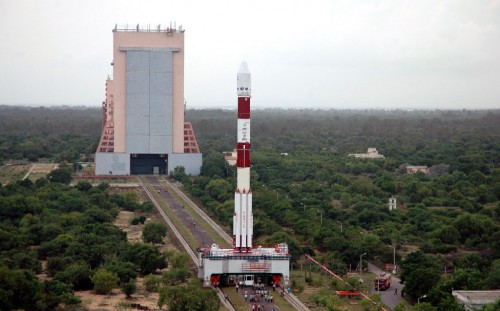
The India Space Research Organisation, ISRO, is preparing for the launch of its Mars Orbiter Mission by November 2013, which will see the Mangalyaan Mars probe lift off from ISRO’s launch site at Sriharikota, on the east coast of the India mainland. ISRO’s primary goal for the mission is simply to prove its technological capability to achieve Mars orbit, which would make it the fourth space agency to achieve such a feat after NASA, Roscosmos, and the European Space Agency.

Assuming ISRO is able to achieve the primary mission goal of putting Mangalyaan, Hindi for Mars-craft, in Mars orbit in September 2014, it will then pursue further science objectives. India’s first Moon mission, Chandrayaan-1, discovered the widespread prevalence of water molecules in lunar regolith. Mangalyaan will look for the presence, and even the source, of methane in the atmosphere of Mars, as well as looking for signs that the atmosphere may have been much thicker in the past. There is some uncertainty about whether the name Mangalyaan will be retained up to, or after, launch. It may just represent a preliminary title to be used until the mission is underway. Hence, for the time being, the mission continues to be referred to as India’s Mars Orbiter Mission.
The Indian government approved the Mars Orbiter Mission on 3 August 2012, a few days before NASA’s Curiosity rover touched down on Mars. Now ISRO is scrambling to be ready for the next launch window to Mars around November 2013. If they miss it, there won’t be another launch window for 26 months. Recent media from India suggests that the mission is still on track, with the 1,350 kg spacecraft due to be integrated with its launch vehicle in August 2013.
Further details about the spacecraft are scant, but it is expected to be of a similar design to Chandrayaan-1, excepting that its solar panel surface area will be increased by a factor of 3 to ensure adequate electrical power can be generated from the lower solar flux available in Mars orbit. Mangalyaan’s 15 kg scientific payload is reported to consist of five instruments:
- Methane Sensor For Mars (MSM)
- Mars Colour Camera (MCC)
- Mars Exospheric Neutral Composition Analyser (MENCA)
- TIR Spectrometer (TIS)
- Lyman-Alpha Photometer (LAP)
ISRO plans to launch the mission with a modified Polar Satellite Launch Vehicle, called PLSV-XL 25, which is similar to the vehicle that launched Chandrayaan-1. The launch from Sriharikota may happen as early as October 2013, and over several subsequent weeks the spacecraft’s orbit will be slowly raised, until late November 2013 when a final rocket fire will send Mangalyaan on an interplanetary trajectory that should see it reach Mars about 300 days later.
All going well, Mangalyaan will reach Mars at about the same time as NASA’s Mars Atmosphere and Volatine EvolutioN, or “MAVEN,” mission, which is also scheduled for the November 2013 Mars launch window. Both spacecraft should arrive at Mars in September 2014, one month before the possible collision of comet C/2013 A1 (Siding Springs) with Mars. However, since its discovery in January 2013 and the subsequent February 2013 announcement that it might be on a collision course with Mars, further revisions to the comet’s trajectory have revised the chance of a Mars collision down to only 1 in 120,000.
Want to keep up-to-date with all things space? Be sure to “Like” AmericaSpace on Facebook and follow us on Twitter:@AmericaSpace




Once the first colonists show it’s possible to live on mars and start building infrastructure for those that follow I can see India and other countries looking to establish bases as a matter of pride.
I would prefer that it be people rather than countries making their claims. Thankfully, the OST works in that regard.
Thanks Ken – ISRO’s motto: ‘Space technology in the service of human kind’. http://www.isro.org/. Not unlike NASA’s: ‘For the benefit of all’.
Truly when someone doesn’t be aware of then its up
to other users that they will help, so here it happens.
If you read the official mission objectives, the technological objectives are as important as the scientific objectives in this mission:
A. Technological Objectives:
Design and realisation of a Mars orbiter with a capability to survive and perform Earth bound manoeuvres, cruise phase of 300 days, Mars orbit insertion / capture, and on-orbit phase around Mars.
Deep space communication, navigation, mission planning and management.
Incorporate autonomous features to handle contingency situations.
B. Scientific Objectives:
Exploration of Mars surface features, morphology, mineralogy and Martian atmosphere by indigenous scientific instruments.